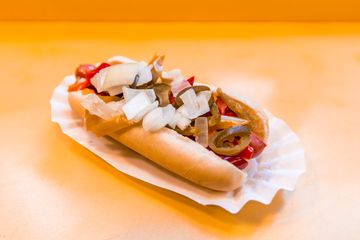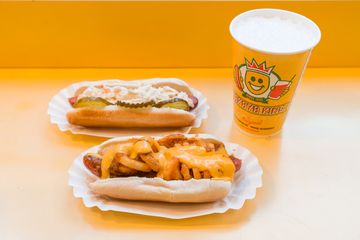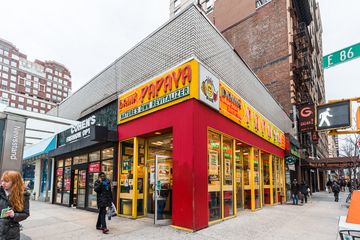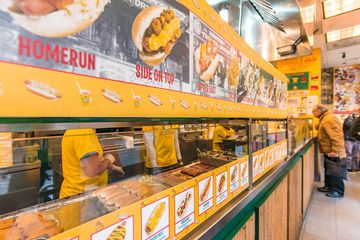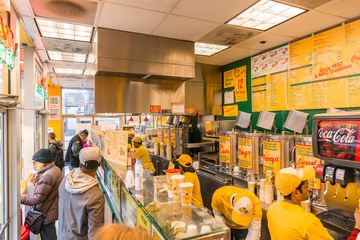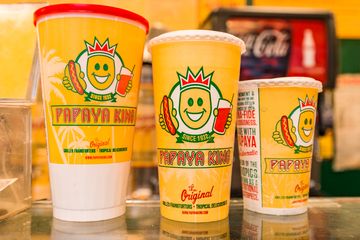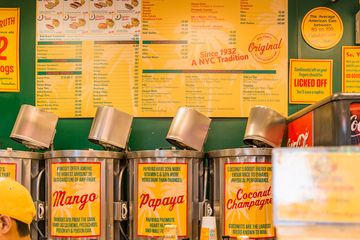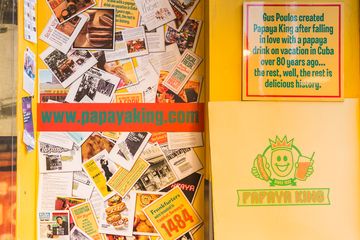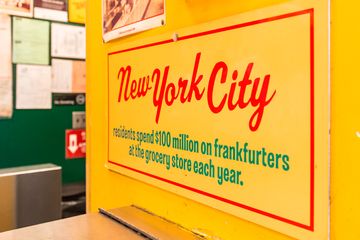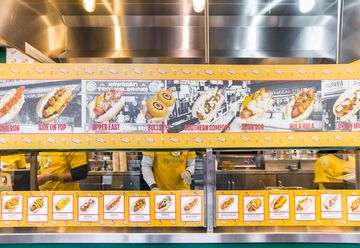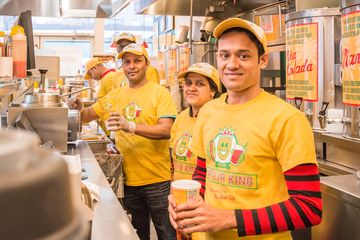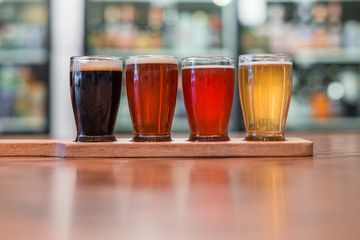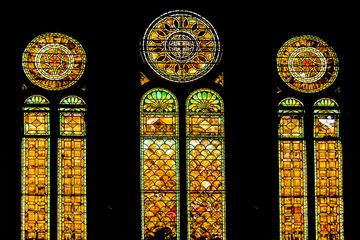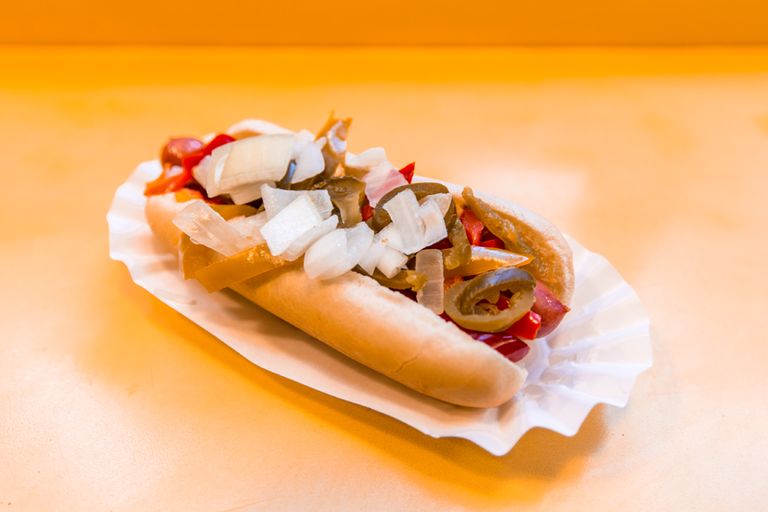
Papaya King has moved to 1535 3rd Ave, New York, NY 10028
Papaya King has been in business since 1932. It began with a young Greek immigrant named Gus Poulos who made a living by first working in a deli and then owning it. After saving up enough money to go on vacation, he took a trip to Miami where he fell in love with papaya. Upon his return to New York, he sold his deli and opened a tropical juice store called Hawaiian Tropical Drinks. Papaya was almost unknown to New York, so Gus introduced locals to the fruit by having girls in hula skirts hand out free juices. His store became a success, and he soon opened others in Brooklyn and Philadelphia. Gus then fell in love with a young German woman named Birdie, who introduced him to the German food sold at the restaurants surrounding his 86th Street store, which was situated in a very German neighborhood. Gus got hooked on frankfurters and started selling them at his store, along with the juice.
Since then, though many more items have been added to the menu, the core elements have remained the same. The papaya drink is still made using the same ingredients and the winning combination of juice and a hotdog is still the reason why people come to Papaya King. Amzad, the Director of Operations and Regional Manager, told me that some customers have been coming to the store for over thirty years. He also informed me that the same company, Marathon Enterprise, has provided the meat for Papaya King's frankfurters for decades. He smiled as he pointed out, "They got hotdogs in ShakeShack and hotdogs at Burger King, but people still come here." He pointed out that there was even a Nathan's next door for a while. The two businesses engaged in a price war and Papaya King came out on top.
Olivia and Tom, two members of the Manhattan Sideways team, were excited to try some items from the menu. Amzad, mentioning that there are eighteen different toppings, offered them a slawdog, made with coleslaw and pickles, as well as "Side on Top," which was covered in curly fries and chili. Olivia and Tom commented how the toppings turned the hotdogs into two completely different culinary experiences. Amzad said that his personal favorite is the Southern Comfort, topped with chili, coleslaw, and onions. He shared that the company's staff comes up with the ideas for the specialty dogs. For example, the Hula Hula, made with pineapple and jalapenos, was invented by Amzad's team at 86th Street. Some frankfurters are popular on 86th Street but not on St. Mark's Place, their other location - uptown stocks mushrooms as a topping, while downtown no longer offers them, as they were never requested. In sampling the classic Papaya and the Pina Colada drinks, Amzad mentioned that papaya is good for the digestive system, which is why the drink goes so well with hot dogs.
Amzad, who has worked at Papaya King since 1996, was excited to tell me that along with the St. Mark's Papaya King that opened in 2013, the juice and frankfurter store was planning on adding a new location on Flatbush Avenue in Brooklyn. He was looking forward to the expansion and seeing what another decade would bring to Papaya King. "I'm happy to be here," he said with a smile.
